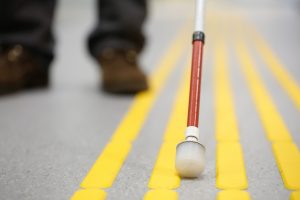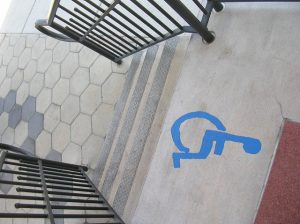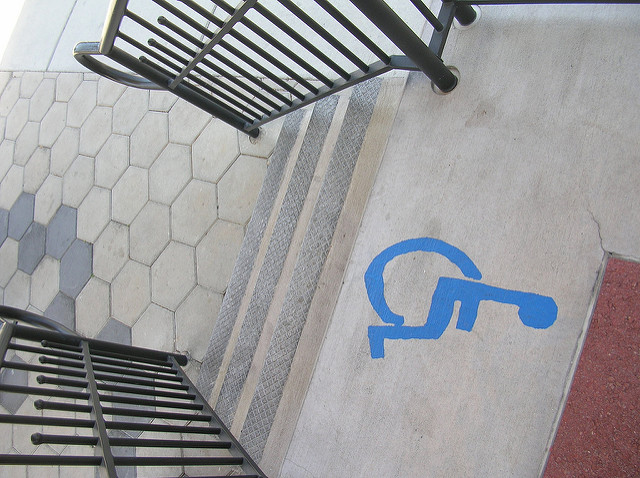


Nationalist diasporas? The Jewish American diaspora and long-distance nationalism
22 September 2017
Beyond Cogito: all Sciences Po urban research and courses
27 September 2017In recent years, French disability policies have gained a collective dimension aiming for better social integration of all the people involved. How do beneficiaries view these policies? Do they achieve the goal of improving disabled people’s life in society? OSC and LIEPP researcher Anne Revillard’s research focuses on this subject. She presents the results in an article entitled La réception des politiques du handicap: une approche par entretiens biographiques [The reception of disability policies: a biographical interview approach] – recently published by the Revue française de sociologie [French journal of sociology].
From protection to inclusion
Disability policies in France developed over time through the accumulation of social protection and re-adaptation measures geared towards disabled people, based on an essentially medical and individual approach to the issue.  Alongside this vision, another policy model has emerged in the past few years in several countries and at the international institutional level. Described as a “civil rights” model in the United States, it advocates the inclusion of disabled people and the need to pursue anti-discrimination policies recognizing them as a minority group. This alternative model highlights the role of societies in the production of disability via obstacles such as poor accessibility.
Alongside this vision, another policy model has emerged in the past few years in several countries and at the international institutional level. Described as a “civil rights” model in the United States, it advocates the inclusion of disabled people and the need to pursue anti-discrimination policies recognizing them as a minority group. This alternative model highlights the role of societies in the production of disability via obstacles such as poor accessibility.
This new conception has gradually taken root in France. In particular, it influenced the “Law for equal rights and opportunities, participation and citizenship for disabled people” passed in 2005. This law also expanded the scope of public policy intervention to educational and professional integration, buildings, transportation, and the creation of an individual service facilitating life in autonomous housing. Through these different levers of intervention, it encouraged a desegregation of disability, in the sense of an inclusion of disabled people in “ordinary” (academic, professional, urban, etc.) living environments rather than their placement in separate institutions.
Understanding the effects of pubic action through a field study
Anne Revillard’s research studied the effects of these measures on people with disabilities and explored the evolution of their social status.  In this sense, she drew on the recent current of “disability studies” to assess how the social experience of disability has changed in France, and whether the position of disabled people in the social hierarchy has changed. She focused on the effects and use of measures, that it, the way in which they are perceived and mobilized by concerned individuals (for example, their representation of a given service, and to what extent and why they use it). To do so, she used interviews to evoke the life stories of people in order to analyze how public action affects their experiences of disability.
In this sense, she drew on the recent current of “disability studies” to assess how the social experience of disability has changed in France, and whether the position of disabled people in the social hierarchy has changed. She focused on the effects and use of measures, that it, the way in which they are perceived and mobilized by concerned individuals (for example, their representation of a given service, and to what extent and why they use it). To do so, she used interviews to evoke the life stories of people in order to analyze how public action affects their experiences of disability.
30 biographical interviews were conducted with people with motor-based or visual disabilities of various ages, geographical origins and social environments. On the basis of these life stories, three main themes were explored in the article: education and employment; financial assistance for the disabled; and accessibility. Several methods were simultaneously used to process these interviews: an intergenerational comparison, to track changes over time; a thematic content analysis to study the effects and uses of specific measures; and an in-depth analysis of excerpts on the topic of accessibility.
Uneven, mixed and underwhelming results
The analyzed life trajectories reveal partial but unequal and chaotic desegregation at school and work, depending on the individuals. While academic and professional integration is a strong norm today, it is far from being achieved in practice. Furthermore, the type and degree of impairment, gender, social class, geographical location and economic conditions strongly shape public education and employment policies.
 The disability compensation benefit (PCH – prestation de compensation du handicap) facilitates autonomy but also imposes greater administrative control in the evaluation of needs and expenditures. Although it is universal (no means test), it is still perceived as a social service. This explains cases of non-use observed in high-income groups.
The disability compensation benefit (PCH – prestation de compensation du handicap) facilitates autonomy but also imposes greater administrative control in the evaluation of needs and expenditures. Although it is universal (no means test), it is still perceived as a social service. This explains cases of non-use observed in high-income groups.
Finally, the 2005 measures on ensuring accessibility in buildings and transportation are conducive to greater social inclusion, but also spark criticism and mobilizations, particularly in response to implementation delays, and especially among the youth. This gives some measure of the frustrations and expectations vis-à-vis the intentions of public authorities and stated promises.
“La réception des politiques du handicap: une approche par entretiens biographiques” [The reception of disability policies: a biographical interview approach], Revue française de sociologie [French journal of sociology], n° 58-1, p. 71-95, 2017.



